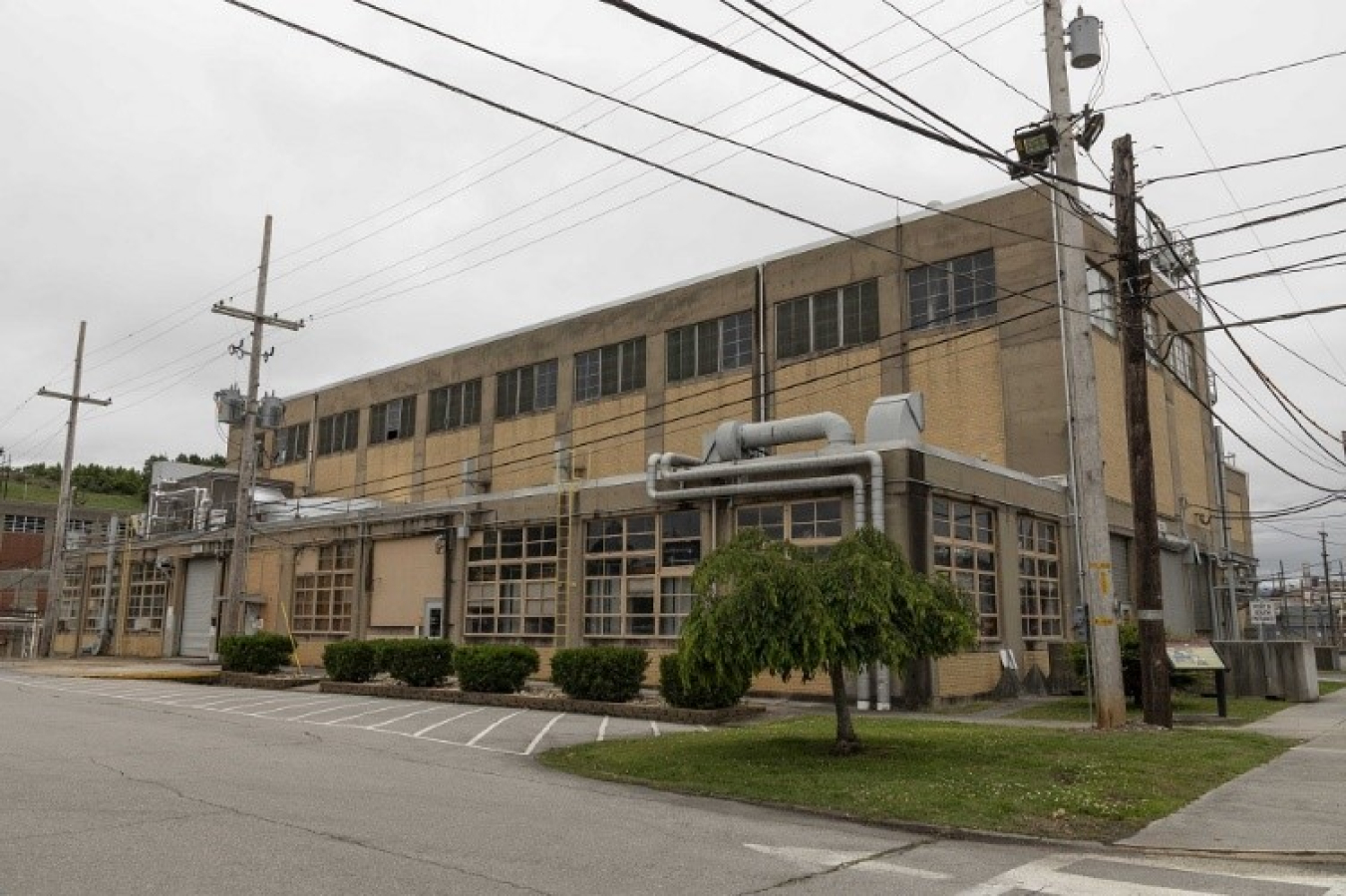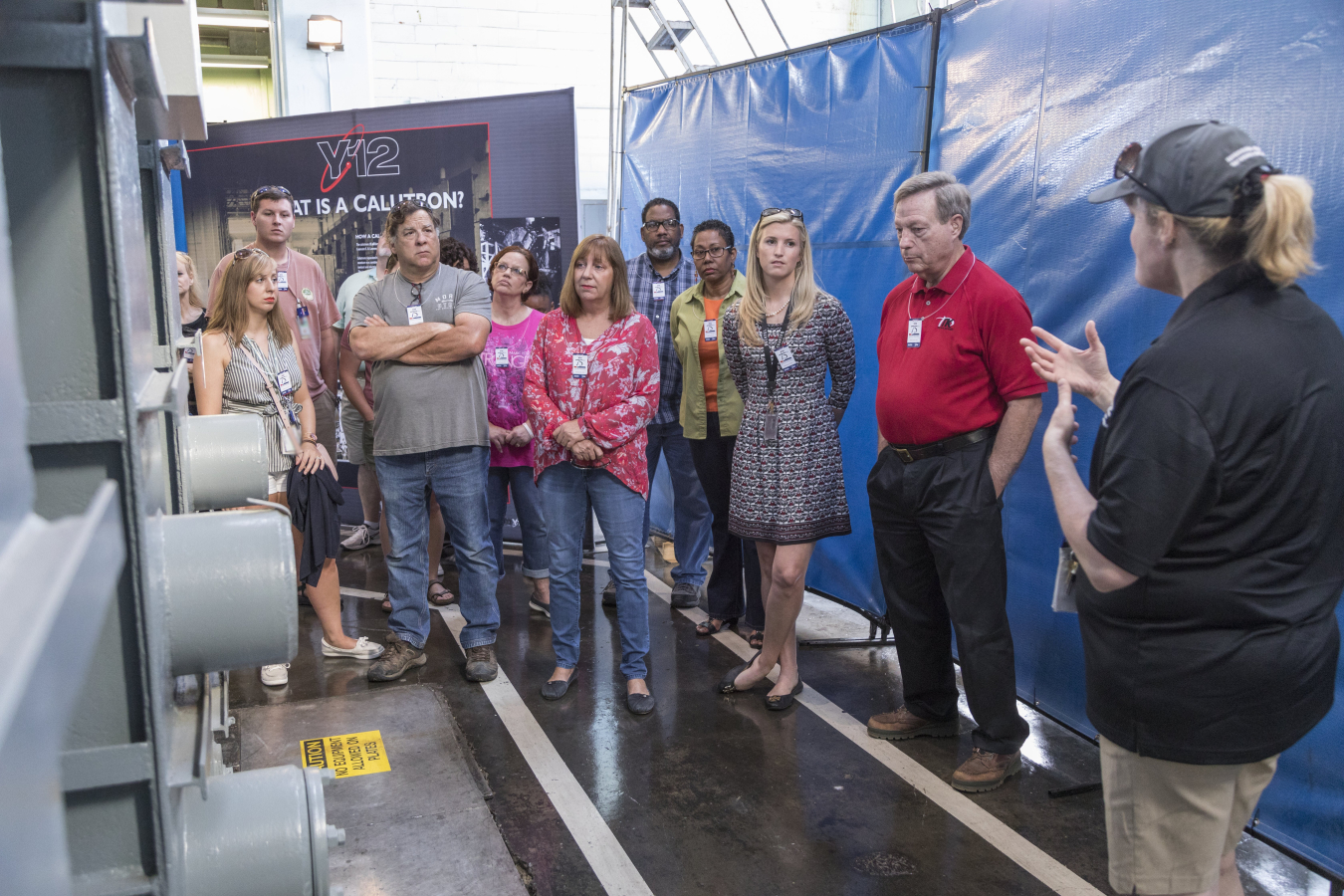The public will soon be able to get a sneak peek inside Y 12 National Security Complex’s Building 9731 – a historic Manhattan Project-era building – without ever stepping foot on site.
National Nuclear Security Administration
August 31, 2021
The public will soon be able to get a sneak peek inside Y‑12 National Security Complex’s Building 9731 – a historic Manhattan Project-era building – without ever stepping foot on‑site. A virtual tour of select areas of the building is being developed in cooperation with the NNSA Production Office (NPO), the Department of Energy (DOE) Oak Ridge Consolidated Service Center, and the National Park Service.
Known as the pilot plant, Building 9731 was the first building constructed in the Y‑12 valley in 1943. The pilot plant’s two Alpha and two Beta calutron machines were used to train calutron operators, prove that production‑scaled calutrons could process materials, and separate other materials to see if they had any value.
To date, the public has only been able to tour Building 9731 during Oak Ridge’s annual Secret City Festival, which was canceled last year due to the COVID-19 pandemic. The virtual tour hosted on the Manhattan Project National Historical Park’s website will allow the building to be viewed anytime from anywhere, including by patrons of the American Museum of Science and Energy in Oak Ridge.
“The virtual tour experience will help a broader audience understand the important work accomplished in the building,” said Johnathan Sitzlar of DOE’s Consolidated Service Center, which is helping develop the immersive virtual tour. “It’s important to share with the world the magnitude of the work that was done here and the dedicated service of the men and women who carried out Y‑12’s national security mission.”

Behind the lenses
As part of creating the virtual tour, Y‑12 videographer Chris Tucker used a special camera with lenses facing different directions. Photos were created by stitching the images captured by each lens to create a 360‑degree image. The result will be much like standing inside the building and looking around.
“The thing that excites me the most about the Manhattan Project National Historical Park is the opportunity we have to work with the National Park Service to give a glimpse of our buildings and share our historical achievements and expertise,” Tucker said.
He acknowledged he feels the weight of the responsibility “to get Y‑12’s legacy right.”
“We have not been able to share the full scope of our evolving missions over the years for good reason, and this veil of secrecy makes it hard to connect with the public on the value of the work that takes place here in the valley,” Tucker said. “I am proud to be a part of this virtual tour project, a part of something much bigger than me and something that requires such responsibility.”
“We are excited to open up this facility to a larger virtual audience who can learn more about the importance of this historic resource,” said Steven Wyatt, NPO Public Affairs manager who coordinates activities with the Manhattan Project National Historical Park.
For future generations
Y‑12’s Susie Smiddy, manager of Building 9731, said that in addition to serving as a tool for historical preservation, the virtual tour also could be an educational aid.
“The virtual tour technology plays a great role in preserving and documenting this historic property and the role it played in American history, but I also can see this someday being used in our schools,” Smiddy said. “For me personally, I will be able to share it with my kids and grandkids and show them the facility that I have had the privilege to manage.”

